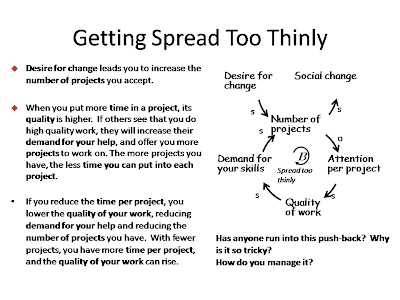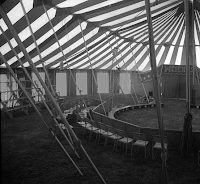I had been using the GTD system at home for about a year when I changed over my office, set up my folders, swapped my bound notebooks for tear-off note pads, and so on. That process worked, combined with Merlin Mann’s Zero-In box (make sure to watch the video), and then even my email started to make me happy. No longer do 600+ half-read emails wait for me on Monday mornings. Of course, I fall out of step from time to time (especially when I travel), but for the most part I can keep my email in-box at zero, and manage all the little pieces of paper and notes that magically turn up. I do my weekly monitoring (a la GTD), I don’t lose anything (I might of course choose to ignore it), and I am finally in control of all the stuff that comes in and out of my office every day.
It is a little frightening knowing exactly what you need to do, you get very calm. Too calm. People think you don’t have enough to do because you are not running around looking harried and overwhelmed. On Step 1 (logical stuff containment system) and Step 2 (taming email dragon) of my plan to boost productivity and achieve a zen-like relationship with the workplace – mission accomplished. Ah, but like any good learning process, this is not the end of the story, even if it is where the books and videos end.
Once you get your act together, Step 3 is to find tolerance, for others and yourself. Now other people’s email and information overload becomes very obvious. You can almost immediately tell who has a system and who doesn’t. However, because your situation is now so different it is very hard to remember what it was like to literally swim (or drown) in email and paper. Of course, when you do have a system, procrastination becomes deliberate and transparent, and you can tell what you don’t want to do or can’t really get your head around (so figuratively, your management underpants are showing.) In Step 3, to further lower stress levels, you are desparately seeking tolerance – nobody’s perfect.
Finally (at least finally for now), Step 4 is to spread the word. As evangelical as that might sound, this is indeed the next logical step. At one point in the acid rain problem of the 1980s, Sweden decided that it would have more impact in Sweden with its anti-pollution investments if it would simply send the money and technology to Poland. When my “Waiting for” folder has more items than my “Action” folder, then I need to step out of my bubble and change tactics. I can send reminders, I can call, I can chase, but that just adds back in work to a process that, if I was the Master of my Universe, would have been done.
I can get my things done, but ultimately most of my things depend on other people getting their things done. So, on to Steps 3 and 4 and those unwritten chapters. Aaaah, life in a system.








 See Doug Johnson’s
See Doug Johnson’s 


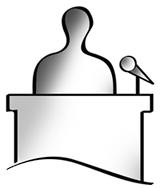
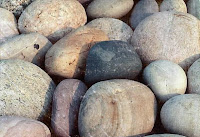






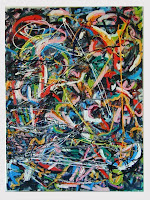
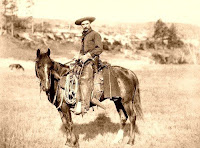 We have just driven out of Yellowstone National Park, past herds of bison and grazing elk, through Shoshone National Forest along the Buffalo Bill Highway into Cody, Wyoming. My husband remarked that this had been the longest time he had been away from an internet or telephone connection in his professional life (he is a software engineer with a PDA). And I too cannot remember the last time I had five days with absolutely no way of reading my email or checking into the office.
We have just driven out of Yellowstone National Park, past herds of bison and grazing elk, through Shoshone National Forest along the Buffalo Bill Highway into Cody, Wyoming. My husband remarked that this had been the longest time he had been away from an internet or telephone connection in his professional life (he is a software engineer with a PDA). And I too cannot remember the last time I had five days with absolutely no way of reading my email or checking into the office.









